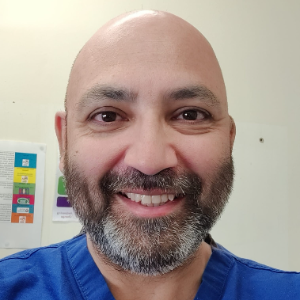Transverse Ligament
The Transverse Ligament is a crucial structure in the cervical spine, specifically within the atlas (C1) and axis (C2) vertebrae. In orthopaedics, the transverse ligament is essential for maintaining the stability of the atlantoaxial joint, allowing for rotation of the head. Orthopedic assessments often involve evaluating the transverse ligament in cases of suspected atlantoaxial instability or trauma to the upper cervical spine. Disruption of this ligament, as seen in conditions like atlantoaxial subluxation, can have severe neurological implications. Rehabilitation strategies related to the transverse ligament in orthopaedics are often focused on preventing further injury and stabilizing the cervical spine. Management may include immobilization with a cervical collar, and in severe cases, surgical intervention may be required to address ligamentous instability.
Understanding the anatomy and function of the transverse ligament is crucial in orthopaedics for accurate diagnosis and appropriate management of conditions affecting the upper cervical spine, contributing to comprehensive musculoskeletal care and effective rehabilitation.

Stephen S Tower
University of Alaska Anchorage, United States
Marcos Brioschi
American Academy of Thermology, United States
Ali Al Kaissi
National Ilizarov Medical Research Center for Traumatology and Orthopaedics, Russian Federation
Akash Ganguly
Warrington and Halton Hospitals NHS FT, United Kingdom
Hussein Jaber
University of Cambridge, United Kingdom




Title : Knotless suture repair for chronic lateral ankle instability: A systematic review & single- arm meta-analysis
Hussein Jaber, University of Cambridge, United Kingdom
Title : The UK profemur recall and implant cobaltism
Stephen S Tower, University of Alaska Anchorage, United States
Title : The tomographic phenotype and the genotype of wormain bones
Ali Al Kaissi, National Ilizarov Medical Research Center for Traumatology and Orthopaedics, Russian Federation
Title : Total Knee Arthroplasty (TKA) in hemophilic arthropathy: Modern outcomes and perioperative strategies
Jack Russek, Touro University California, United States
Title : Musculoskeletal and orthopedic implications of Gender-Affirming Hormone Therapy (GAHT): A PRISMA-Guided systematic narrative review
Jack Russek, Touro University California, United States
Title : New treatment of muscle contracture and joint contracture through muscle regeneration with mitochondrial dynamics
Ki Ji Lee, Busan Medical University, Korea, Republic of